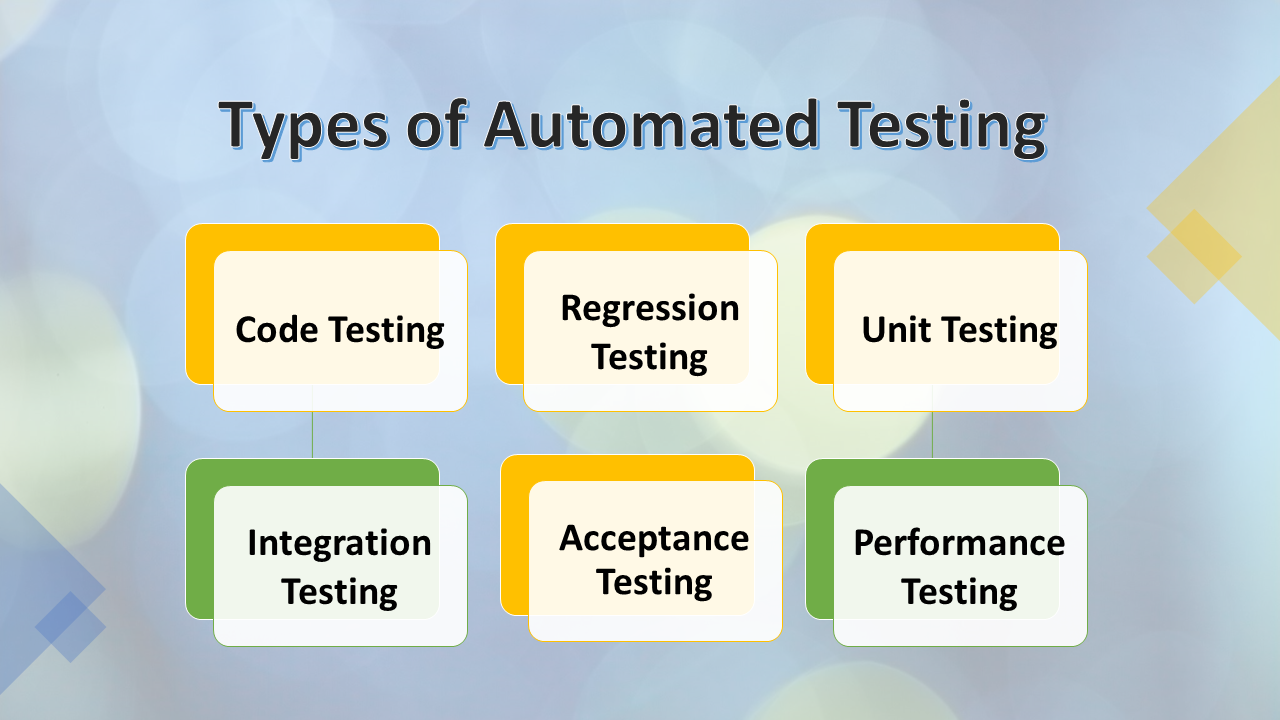Automation Testing Methods: Best Practices for Seamless Assimilation
Automation Testing Methods: Best Practices for Seamless Assimilation
Blog Article
From Manual to Automated Screening: A Comprehensive Overview to Transitioning Efficiently and Successfully
In the world of software testing, the change from guidebook to automated processes has actually come to be a significantly important shift for companies looking for to improve effectiveness and precision in their screening techniques. The trip from handbook to automated testing is not without its obstacles, however when approached strategically and with a clear plan in mind, the advantages can be significant.
Advantages of Automated Evaluating
Automated screening offers many advantages, improving efficiency and precision in software program growth processes. Automated examinations can be run all at once on multiple tools and operating systems, considerably speeding up the testing stage compared to hand-operated testing.
Additionally, automated testing ensures a greater degree of precision in detecting defects. Considering that automated tests follow predefined scripts, human error is lessened, leading to more trusted examination outcomes. Consistency in testing is also boosted, as automated examinations perform the same actions precisely each time they are run. This uniformity is critical in making sure that all capabilities of the software program are completely checked, minimizing the chance of unnoticed bugs sliding via to manufacturing.
Picking the Right Tools

Firstly, analyze your requirements and purposes. Understand the extent of your task, the innovations entailed, and the ability of your group. This evaluation will help you establish the capacities and features you call for in your testing tools.
Secondly, consider the compatibility of the tools with your existing systems and processes. Seamless assimilation with your current software program growth lifecycle is important to guarantee a smooth transition to automation.
In addition, examine the scalability and adaptability of the tools. As your screening requires develop, the devices must have the ability to adapt and accommodate modifications properly.
Lastly, variable in the support and area around the tools. When executing automated screening, durable support and an energetic customer community can supply beneficial resources and assistance. By thoroughly considering these facets, you can pick the right tools that align with your requirements and established the stage for a successful change to automated screening.
Composing Effective Examination Scripts

When crafting examination scripts, it is vital to think about the specific needs of the software being examined and guarantee that the scripts attend to all vital check out here performances. Descriptive and clear calling conventions for test manuscripts and test cases can improve readability and maintainability. In addition, integrating error handling devices within the test scripts can aid in determining and addressing concerns quickly.
Furthermore, organizing examination scripts right into modular components can enhance reusability and scalability, minimizing redundancy and improving performance in test script maintenance. Regular testimonials and updates to check manuscripts are vital to equal advancing software demands and capabilities. By complying with these concepts, testers can develop robust and effective test scripts that add dramatically to the success of automated screening processes.
Integrating Automation Into Workflows
Efficient integration of automation devices right into existing operations boosts and improves procedures performance within software advancement cycles. When including automation right into workflows, it is critical to identify recurring tasks that can be automated to save time and reduce human mistake. By flawlessly incorporating automated screening devices like Selenium or Appium into the software development lifecycle, groups can achieve faster responses on code modifications, resulting in quicker bug discovery and resolution. This integration enables constant screening throughout the advancement process, making sure that any type of issues are recognized official website early on, causing greater software high quality. Additionally, automation can be used to trigger tests immediately after each code dedicate, giving immediate validation and freeing up testers to concentrate on more facility scenarios. Proper combination of automation tools needs collaboration between growth, testing, and procedures groups to establish a unified operations that maximizes efficiency and effectiveness in supplying top notch software products.
Making Certain a Smooth Shift
Efficiently transitioning to automated screening includes precise preparation and careful implementation to take full advantage of and lessen disturbances effectiveness in the software development process - automation testing. To guarantee a smooth transition, it is crucial to start by performing a comprehensive evaluation of the existing testing procedures and recognizing locations where automation can bring one of the most substantial benefits. Engaging with all stakeholders beforehand at the same time, consisting of designers, testers, and project supervisors, is critical for garnering support and buy-in for the automation effort
Communication is key during this shift stage. Clear interaction of the objectives, advantages, and expectations of automated testing aids to handle any kind of resistance or problems that may emerge. Furthermore, supplying ample training and sources for staff member to upskill in automation devices and techniques is crucial for making sure an effective transition.

Final Thought
Finally, transitioning from guidebook to automated testing provides many advantages, including boosted efficiency and reliability. By choosing the proper tools, creating effective test manuscripts, and integrating automation flawlessly into process, companies can make certain a effective and smooth shift. It is vital to embrace automation as a useful possession in software program testing processes to enhance overall high quality and productivity.
In the world of software testing, the shift from guidebook to automated processes has become a significantly check my site crucial change for companies seeking to boost effectiveness and precision in their screening methods. Automated tests can be run at the same time on multiple tools and running systems, drastically speeding up the testing phase contrasted to hand-operated screening. Uniformity in testing is additionally enhanced, as automated tests perform the very same actions precisely each time they are run.To make sure the effective implementation of chosen testing devices, the development of reliable test scripts plays an essential function in confirming the performance and performance of automated processes - automation testing. By adhering to these concepts, testers can develop robust and reliable examination scripts that add considerably to the success of automated testing processes
Report this page